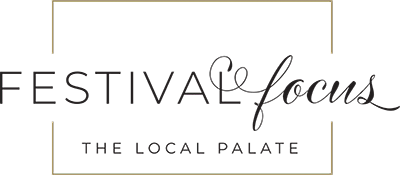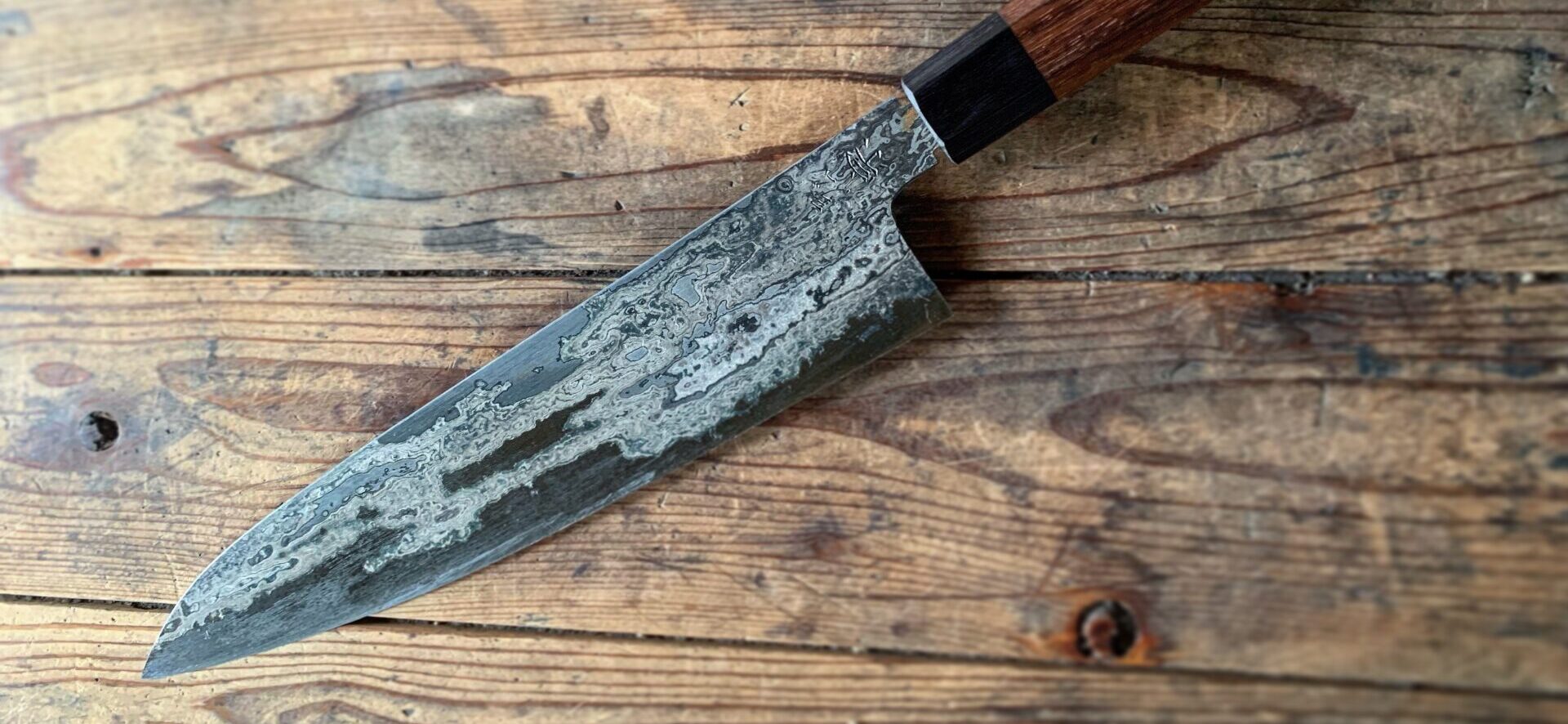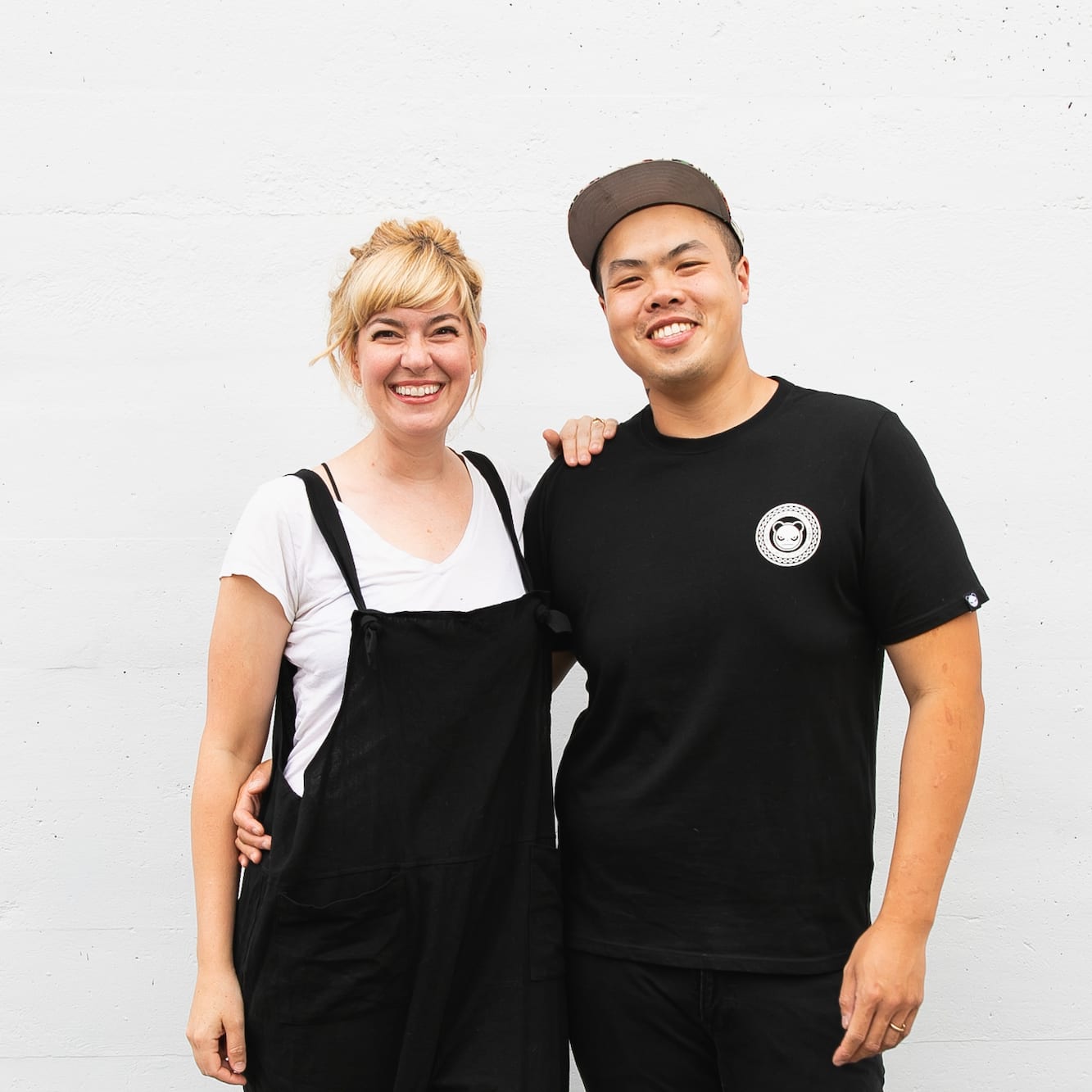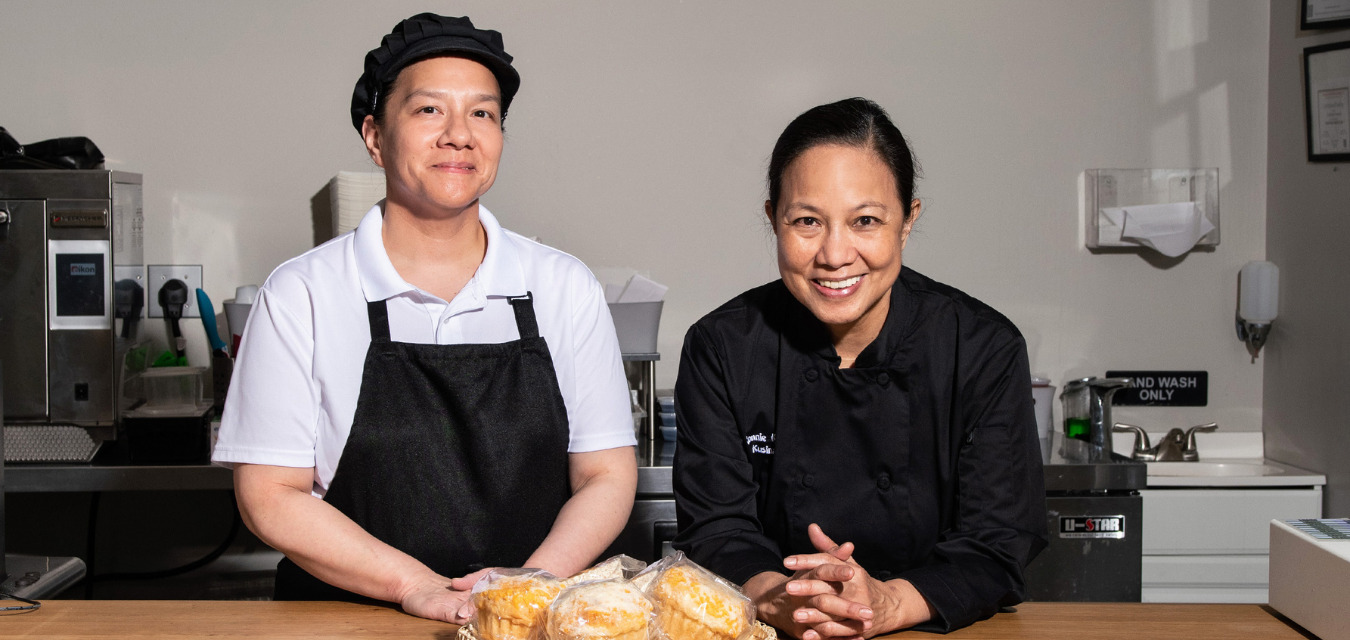In search of custom-forged knives, one New Orleans chef visits a corner of Japan where the secret to great blades is hidden in the water
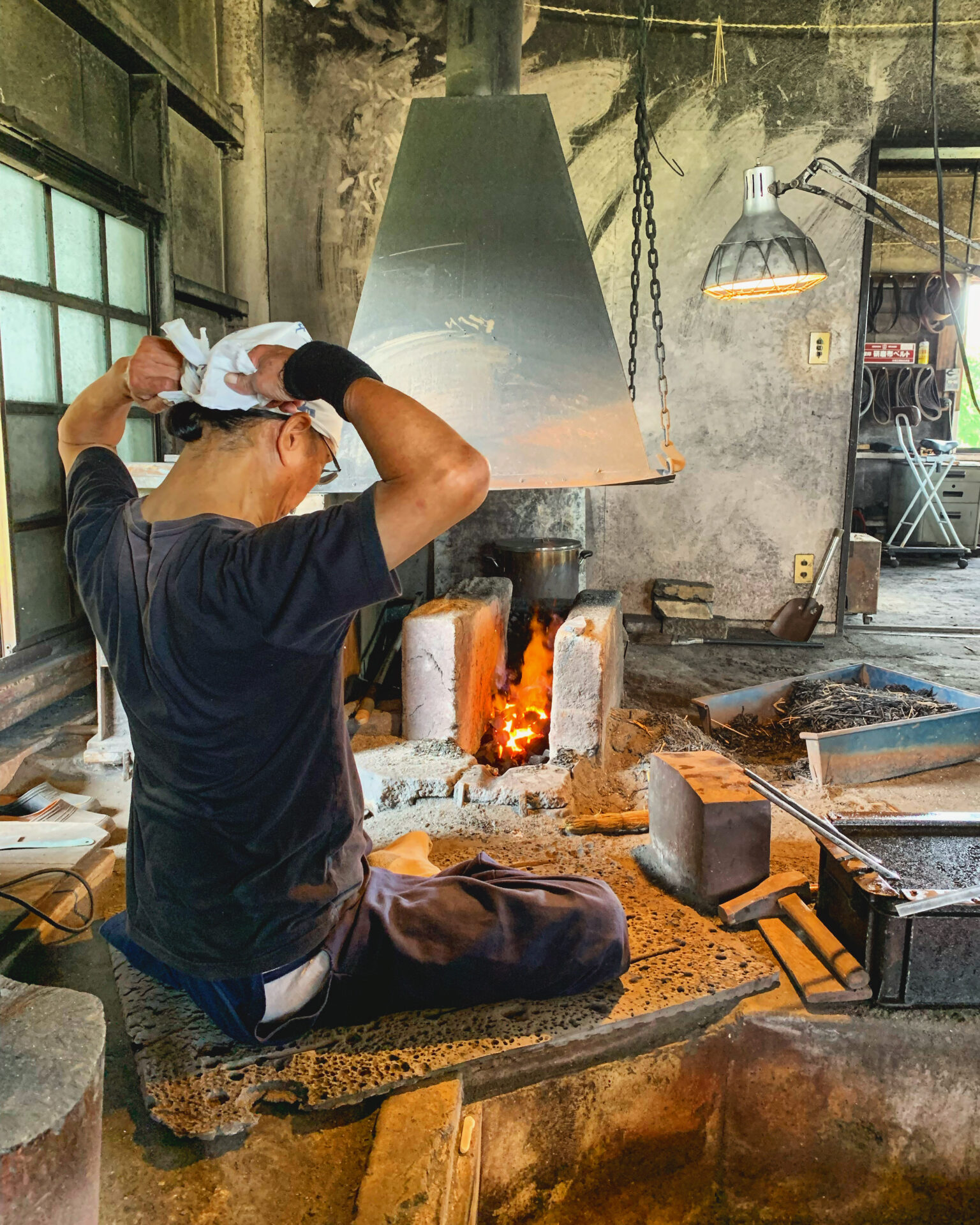
About 10 years ago, I was on my way back from Singapore and had a long layover in Tokyo where I met up with one of my close chef friends. I’d been cooking professionally in San Francisco and the Bay Area and had gotten into Japanese knives—I already had several in my kit. On that trip, we toured the tuna auction at the Tsukiji Fish Market—the older version when you could still walk through the bustle of sorting and preparing the day’s catch and have access to the families who’ve been there for generations. I was fascinated by the use of myriad knives to break down all the different fish we encountered. That trip was a big catalyst for me eventually moving back to New Orleans to open my knife shop, Coutelier, in 2015. Since then, I’ve traveled to Japan about a dozen times, developing strong relationships with knife makers, whose products I buy and sell directly.
This past fall, I returned to Japan to attend the Cutlery Festival in Seki City, in the Gifu prefecture. The festival has been going on for many years and highlights the prolific knifemakers in Japan. Upon landing in Tokyo this time, I immediately noticed more Americans than I’d ever seen on previous trips. But once I jumped on the shinkansen (bullet train) to Nagoya, I was the only gaijin, or foreigner, around.
The town’s location is part of an ancient roadway that led through the Japanese Alps, and historically it’s a region where many katanas were produced—the hand-forged swords of the samurai. The reason is due to the Nagara River’s high iron and mineral content, which was extracted and smelted into tamahagane steel, used to forge the finest katana swords for the samurais and shogunate.
The river provides many resources for other crafts as well, such as ceramics and pottery, which are made from its clay, and washi paper made from reeds that grow along the banks. While I was there, I attended a paper lantern festival, with lanterns made from the washi paper, that is a cultural celebration for the region. It’s also a primary rice-growing region, so both rice and sake from here are very important. For centuries, so much production has been tied to this river, thanks to the merchant roads leading in and out of the area.
Seki was traditionally a stopping point for traveling samurai, one of the many reasons sword production was so prolific in this area. Many of these bladesmiths are small, family operations whose generational forging practices go back hundreds of years. As they transitioned into the 20th century, Japanese knives became a valuable market.
In my opinion, there’s no better crafted tool. These blades are alive, change with time, and tell a story. Rather than a drawer full of cheap knives, it’s better to have a select few, hand forged by a family that has been making them for generations—and by making this choice, we are supporting the preservation of this ancient craft.

The master craftsmen and women of Japan are called “shokunin.” This is not particular to one craft but refers to mastering the one you spend your life’s work dedicated to perfecting. There is a vast range of shokunin factories in this region—some large, some very small. I visited one very old factory, and in the forging room, deep pits are dug into the ground for the hydraulic hammers used to forge and shape the steel, alongside coal firepits used to heat the steel. Every person, every movement has a functionality and purpose—and everyone has a particular skill set in each part of the process. Someone is working the forge; another person is grinding the steel. One person is making the handles; another is the final master knife sharpener. The idea is that production is consistent when each person masters their skillset.
There are two sides of the knifemaking spectrum throughout Japan—a very modern, high-tech end of production and the very old-world variety using ancient methods. One of these old-world makers is Hiromune Takaba, a multigeneration swordmaker. Many think of him as a ghost—most people have never met him, but I got to know him a few years ago. His father was a katana sword maker, and he’s one of the last true sword makers who actually makes his own tamahagane steel, extracting the iron from the river, smelting it down, and forging katanas using very ancient methods. He only makes a few chef knives a year, and because of our relationship with him, we have access to them, among only a few in the world with this privilege. This is why it’s so important for me to travel to Japan so frequently and to this festival: getting to meet these makers one-on-one, becoming part of their network, and constantly reminding me how incredible this tradition is.
These travels also allow me a chance to immerse myself in the amazing food culture and traditions of so many regions throughout the country. In New Orleans, I also run a small Japanese izakaya called Sukeban and am constantly exploring the food culture when I travel there. This time, I was able to go on a night-fishing trip in search of ayu, a sweet, small river fish caught in a 1,500-year tradition. We went out on a boat guided only by a small fire set in a basket. The river was crystal clear, so you could see at least 10 feet down. Cormorant birds are trained to catch the fish and bring them back to a basket on the boat. This is one of the area’s oldest traditions, and getting to see it in person helped me wrap my head around the culture a bit more and understand how deep an ocean of tradition this country harbors (especially in comparison to the “teenager” America is in light of such things).
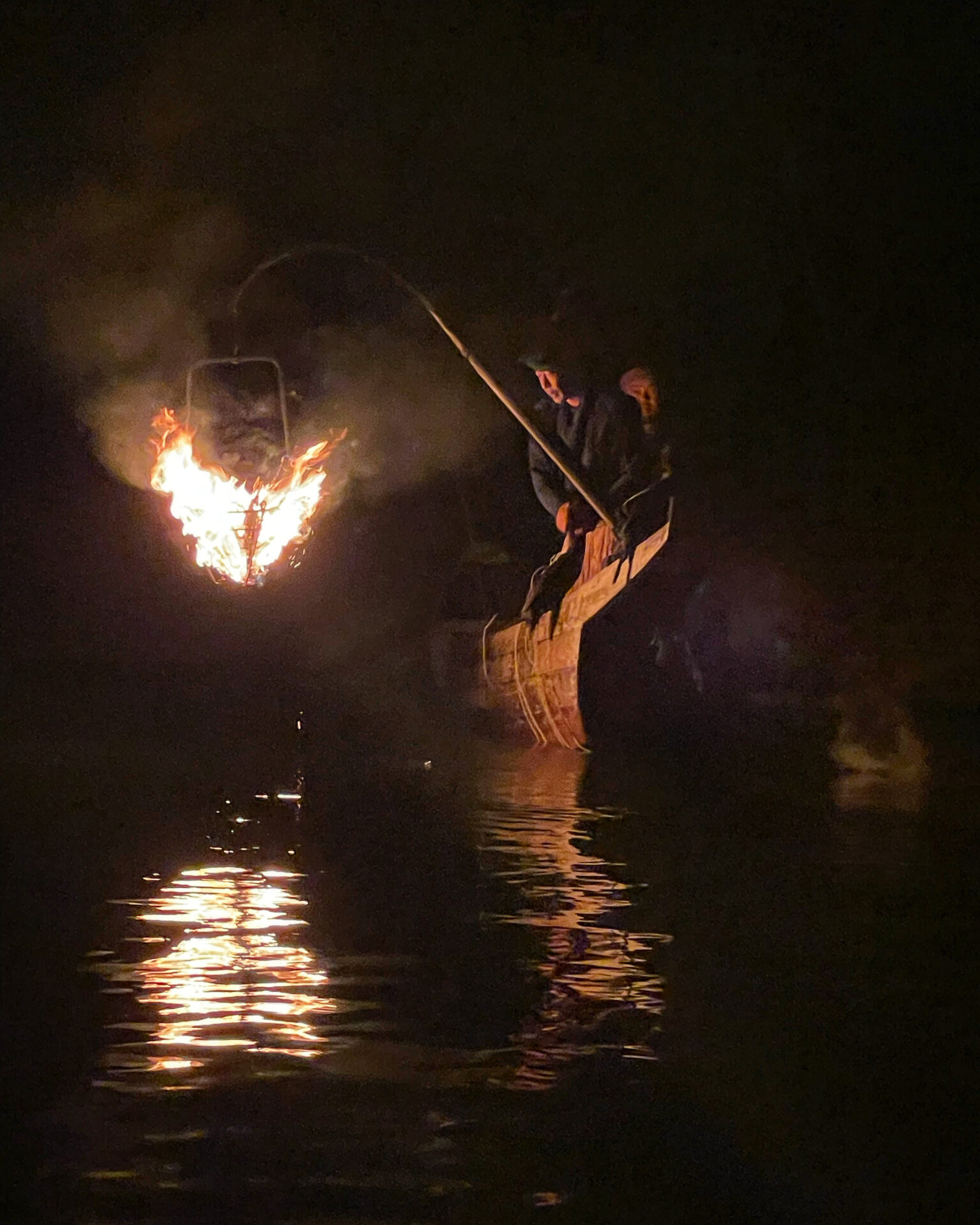
I also ate plenty of soba, a buckwheat noodle that this area is known for. Since it’s a landlocked region, and you see lots of rice and buckwheat cultivation. Sushi is not as prolific as it is in the more coastal areas, but izakaya culture is alive and vibrant. One day, my friend took me to a place that’s famous for its unagi don, barbecued freshwater eel. It’s run by a husband and wife, and the eel is charcoal grilled and served over rice with a sauce made from a mother stock that they have been feeding for decades. That’s it. It’s just delicately grilled with this sauce brushed over it—there’s a sweet, rich umami to it. It’s a whole other ball game of craftsmanship.
I took another long train journey out to Nagoya before heading back to Tokyo. I love train culture in Japan because it’s all about finding ekiben bento boxes for the ride and passing through incredible countryside vistas.
On each trip, I always treat myself to one nice Edomae-style sushi omakase experience—an intimate, eight-seat sushi bar with one chef and his apprentice. In Nagoya, I found one amazing sushi spot, tucked away and hidden deep in a neighborhood on the outskirts of the city center run by a young chef. As usual, I was the American, and a solo diner, finding myself in this tiny space with just about six other diners, and everyone looked at me like, what are you doing here? But I started speaking the little Japanese I know and they were speaking the little bit of English they knew, and soon we were in conversation, laughing, and sharing knowledge with each other for hours. These moments are the reason I do this—and it’s why I’ll keep going back.
keep reading
At the Table
Charleston’s Kitschy Sichuan Spot
Charleston is eating up Tina and David Schuttenberg’s brand of Sichuan at their kitschy hot spot Kwei Fei.
In the Field
Expert Picks: Shuai and Corrie Wang
At Jackrabbit Filly, opened last fall in North Charleston’s Park Circle neighborhood and named for their Chinese zodiac signs, the couple serves food that’s grounded in Shuai’s Chinese heritage and embracing of Southern ingredients.
In the Field
Filipino Chefs in Jacksonville: Kusina
TLP explores the culture of Filipino chefs in Jacksonville. Here we highlight Kusina, where home is emulated through fresh-baked ensaymada.







